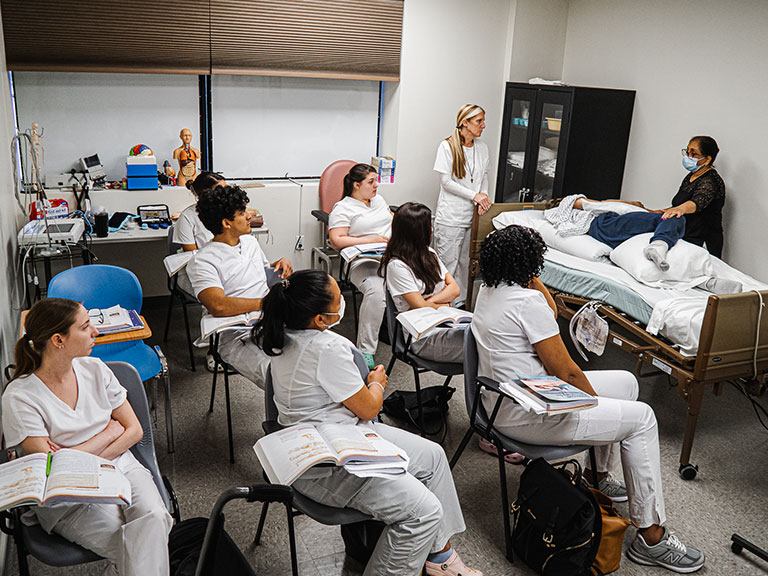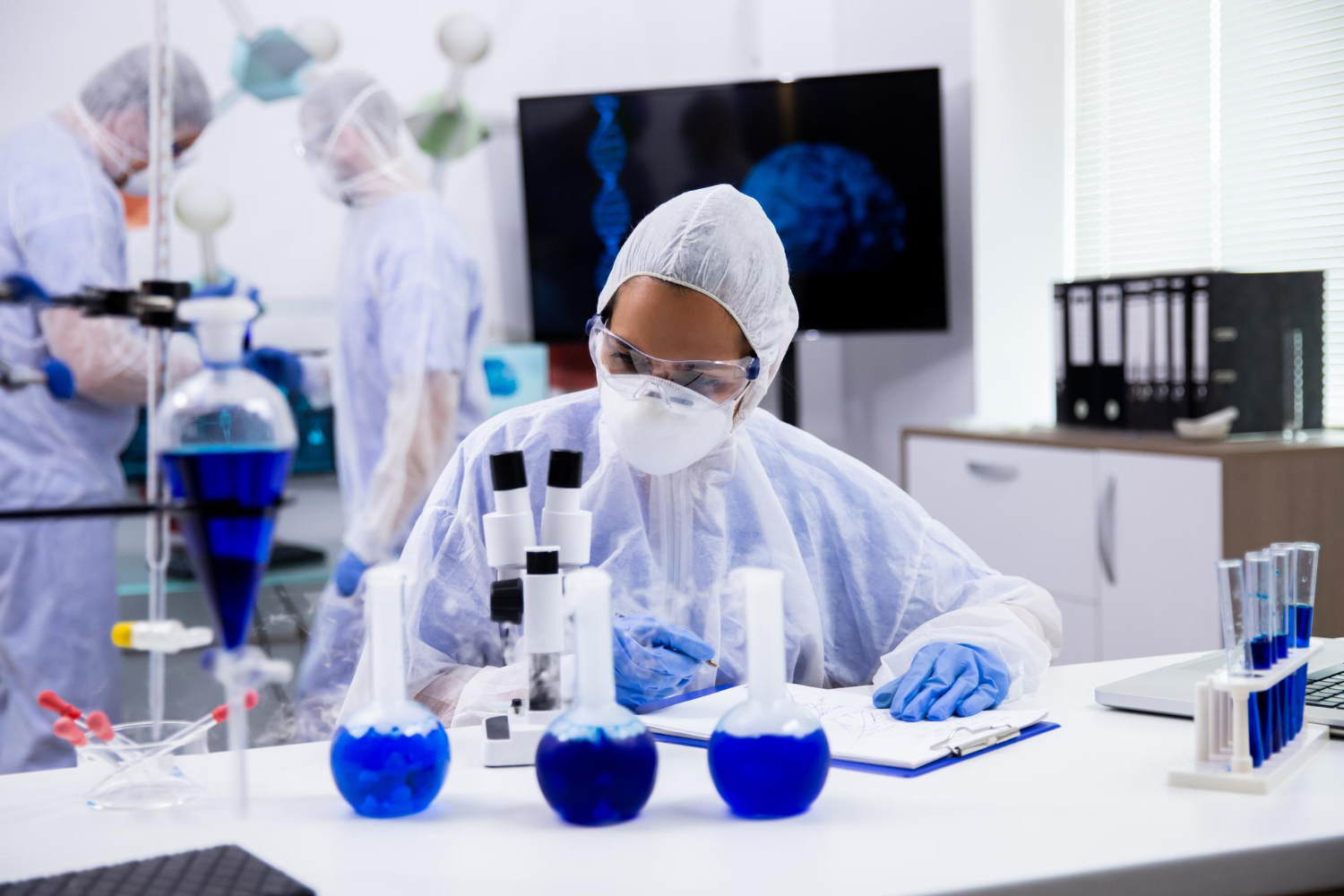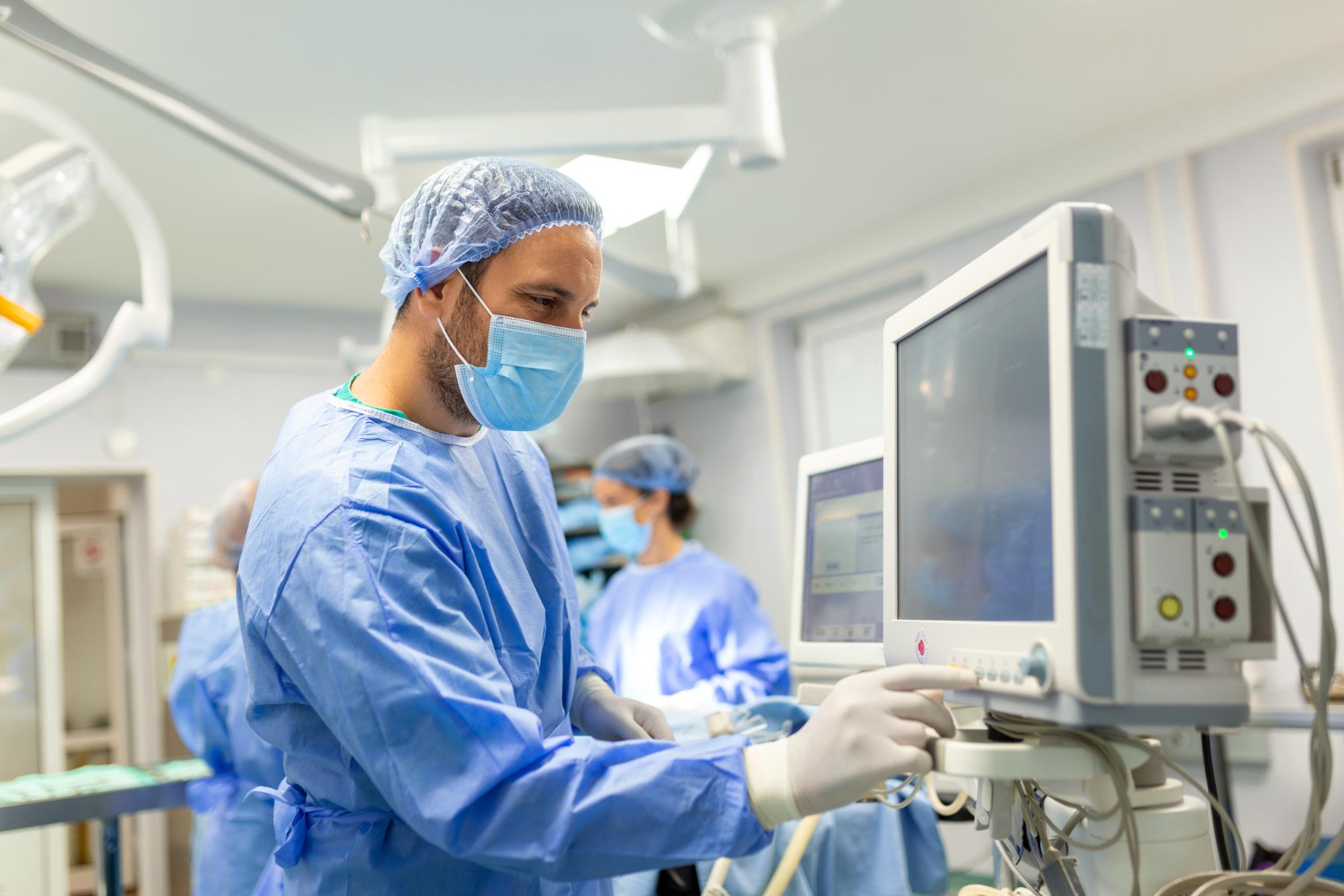| Total Program Hours | Externship Hours | Class Hours |
|---|---|---|
| 450 | 100 | 350 |
(Mon - Fri 5:30pm to 9:30pm, 30 weeks = 7.5 months)
Employment projections data for medical assistants, 2021-31
Note: All Occupations includes all occupations in the U.S. Economy. Source: U.S. Bureau of Labor Statistics, Employment Projections program

The course teaches the basic structure and functions of the human body. It also emphasizes the various systems of the body, such as cardiovascular, respiratory, neurology, gastroenterology, nephrology, and others. The course will also describe in detail the most common diseases and disorders corresponding to each system. In addition to anatomy and physiology, the course also includes the teaching of several medical terms, medical specialties, and medical measurements.
The course instructs and demonstrates the proper techniques of various laboratory procedures. The course teaches the basic guidelines for lab safety procedures and the use of personal protective equipment such as hand washing and sterilization of instruments. The course will explain and demonstrate the proper techniques used for examination of each body system.

Examinations include proper eye examination utilizing Snellen and Jaeger charts, ear examination with an audiometer, blood withdrawal for glucose level with a sterile lancet, and application of dressing and bandages. The course will also teach the proper techniques of taking vital signs, which include taking various types of body temperatures, measuring weight and height, measuring blood pressure with a sphygmomanometer, taking respiration and pulse rate, and measuring oxygen saturation with a pulse oximeter. In addition, the course also instructs the proper techniques to obtain urine specimens, use Reagent strips, perform a specific gravity test, perform a pregnancy test, and prepare urine specimens for microscopic examination.
The course will describe in detail the purpose and various methods to obtain a fecal occult blood test, Pap smear, hemoglobin meter, and Accucheck advantage glucose meter. The course will demonstrate the purpose and the proper use of spirometry tests and intradermal skin tests. The course will review all the universal signs and standard precautions in regard to human blood and body fluids and also discuss the purpose of the regulatory bodies (OSHA, CLIA) regarding disease transmission. The course will teach the proper preparation methods for a treatment room and a minor surgical tray when assisting the physician.

The course concentrates on the proper techniques of blood drawing. It also demonstrates the various methods utilized for blood drawing, such as butterfly syringe, needle syringe, and evacuated tube system. The course also consists of describing the terminology used to order laboratory tests and identifying and labeling the parts of the laboratory equipment. The course will teach proper methods of applying gloves, gowns, and masks for laboratory procedures. Each student will have the opportunity to practice their phlebotomy skills on mannequin arms, and most importantly, they will have the opportunity to practice their technique under the supervision of their instructor.
The course begins with a basic description of the major internal and external structures of the heart. It will also describe the major functions of the cardiovascular system, the major blood supply of the heart, and the electrical conduction pathway of the heart. The instructor will explain the reasons for performing an EKG and also demonstrate the proper method for obtaining a standard EKG rhythm strip. All students will have the opportunity to practice their EKG techniques utilizing a computer-based 12 Lead EKG as well as a 12 Lead EKG machine. It will also emphasize the interpretation of various rhythm abnormalities from EKG strips. The course will describe in detail the EKG characteristics of sinus rhythms, atrial rhythms, ventricular rhythms, atrioventricular blocks, and pacemaker rhythms. The course will teach how to handle and resolve troubleshooting problems that arise when obtaining an EKG reading.
| Schedules | Mornings | Evenings | Weekends |
|---|---|---|---|
| 9:00am - 2:00pm | 5:30pm - 9:30pm | Friday (5:30pm - 9:30pm) | |
| Mon - Fri | Mon - Fri | Sat & Sun (9:00am - 5:30pm) | |
| 25 weeks | 30 Weeks | 30 Weeks | |
| Course Fee: | Registration Fee / Book: | Total: | |
| $4,499.00 | $500.00 | $4,999.00 |
Clinical medical assistants primarily focus on patient care within medical facilities. Their duties include-
They keep patients comfortable, maintain cleanliness in exam rooms, and follow medical protocols and regulations. Clinical medical assistants are key team players in assisting healthcare providers and delivering quality patient care in different medical settings.
For those who would like to become clinical medical assistants, having a high school diploma or its equivalent is essential.
Our 450-hour training program for clinical medical assistants is designed to give a full view of the most important medical procedures and patient care. Students will acquire both theoretical knowledge and hands-on experience in the medical field that prepares them for a successful career.
Clinical medical assistants and medical assistants have similarities and differences in their functions. Clinical medical assistants concentrate on patient care by carrying out tasks like taking vital signs, preparing patients for exams, and helping with procedures.
In comparison, medical assistants have a broader range of responsibilities, such as administrative tasks, which include scheduling appointments, maintaining patient records, and handling insurance billing. Clinical medical assistants, however, are more patient-oriented in clinical settings, while medical assistants can work in both administrative and clinical capacities within medical offices or facilities.
Upon course completion, our staff assists our graduates in job placement. Our placement process is supported by the career counselor who will assist you during your career journey. With a great placement rate for our Clinical Medical Assistant Program, you can trust us to help you kick-start your healthcare career.
